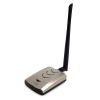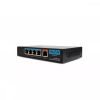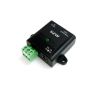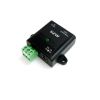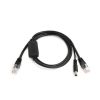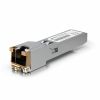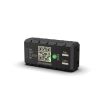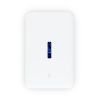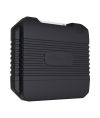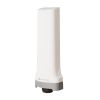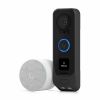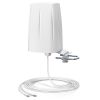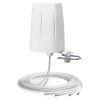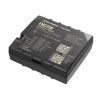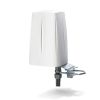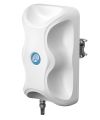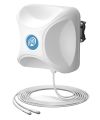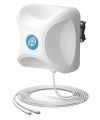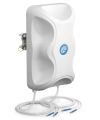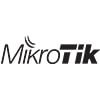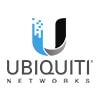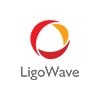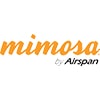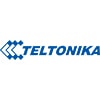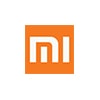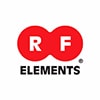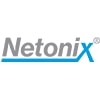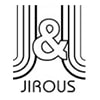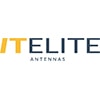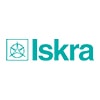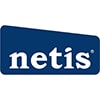Latest products
2024-03-25
MIKROTIK Wi-Fi 6 Dual-band Sector Antenna with Radio mANTBox ax 15s (L22UGS-5HaxD2HaxD-15S)
1x Gigabit LAN port | 1x SFP port (2.5G supported) | 1x USB port (Type A) | Passive PoE-in (18-28 V) | Up to 574 Mbit/s in 2.4 Ghz (802.11b/g/n/ax) | Up to 2400 Mbit/s in 5 Ghz (802.11a/n/ac/ax ) | Antenna gain: 12 dBi (2.4 GHz), 15 dBi (5 GHz) | Range: up to 20 km | WPA3 | Router OS (Licence level 4)
2024-03-06
MIKROTIK Cloud Router Switch (CRS326-4C+20G+2Q+RM)
2x 40G QSFP+ ports | 2x Combo 10G Ethernet/ SFP+ ports | 20x 2.5Gigabit Ethernet ports | 1x 10/100 Ethernet port | 1x Serial console port (RJ45) | Dual-redundant power supply | RouterOS (License level 6)
2024-02-15
ALFA NETWORK LoRa / HaLow 863-870 MHz 5 dBi Omnidirectional Outdoor Antenna (AOA-868-5ACM)
Covers LoRa/HaLow/Sigfox Frequency: 868 MHz
2024-02-15
ALFA NETWORK 802.11ac standard Wireless WiFi USB Adapter (AWUS036ACHM)
2.4GHz 150 Mbps or 5.0GHz 433 Mbps Wi-Fi data transfer speeds
2024-02-15
ALFA NETWORK 60W Ultra PoE to 4-Port 802.3af/at Gigabit PoE Extender Switch (APS104G-EX)
5x Gigabit LAN Ports (1x Ultra PoE 802.3bt Input, 4x Data + Power 802.3af/802.3at Output) | Plug-n-Play | Fanless | Rugged & Reliable Design
2024-02-15
ALFA NETWORK 802.11ax AC1800 High-Speed USB 3.2 Dual Band WiFi adapter (AWUS036AX)
2x 5 dBi dual-band antennas | Standards 802.11a/b/g/n/ac/ax | 2.4 GHz: up to 573.5 Mbps, 5 GHz: up to 1201 Mbps | USB 3.2 Gen.1 | Advanced Security with WPA3
2024-02-15
ALFA NETWORK Redundant Industrial Gigabit PoE Injector with Reset Function (APOE03GR)
Input voltage - 5 V dc to 57 V dc, Nominal = 48 V dc (maximum 1.7 A) | Output Voltage based on input Voltage | PoE Reset Function
2024-02-15
ALFA NETWORK Redundant Industrial Gigabit PoE Injector with Surge Protection (APOE03GS)
Input voltage - 5 V dc to 57 V dc, Nominal = 48 V dc (maximum 1.7 A) | Output Voltage based on input Voltage | PoE Reset Function | Surge Protection
2024-02-15
ALFA NETWORK Wi-Fi 6E PCIe Card with Magnetic Antenna (AIT-AX210-EX)
2x 5 dBi gain tri-band antennas (2.4 GHz, 5 GHz, 6 GHz) | Standards 802.11a/b/g/n/ac/ax | Data rate up to 2.4 Gbps | Bluetooth 5.2 | OFDMA and MU-MIMO | PCIe Wireless Adapter (ARS-AS02T dual magnetic antenna stand with 2-meter RG-174 RF cable included)
2024-02-15
ALFA NETWORK Wi-Fi 6E PCIe Card with Panel Antenna (AIT-AX210-EZ)
1x 4 dBi gain tri-band antenna (2.4 GHz, 5 GHz, 6 GHz) | Standards 802.11a/b/g/n/ac/ax | Data rate up to 2.4 Gbps | Bluetooth 5.2 | OFDMA and MU-MIMO | PCIe Wireless Adapter
2024-02-15
UBIQUITI 10G SFP+ to 10/5/2.5GbE RJ45 Module (UACC-CM-RJ45-MG)
1/2.5/5/10 Gbps throughput | Supports connections up to 100 m
2024-02-15
UBIQUITI UISP Router Professional (UISP-R-Pro)
8x Gigabit LAN ports | 1x Gigabit WAN port | 4x SFP+ ports | 1.3" LCM color touchscreen | Additional Power TransPort input for DC redundancy
2024-02-15
TELTONIKA Wi-Fi 5 Access Point, w/o PoE Injector (TAP200)
1x Gigabit LAN port (supports 802.3af PoE in) | 2x 2.4 GHz and 2x 5 GHz internal Wi-Fi antennas | Wi-Fi 5 (IEEE 802.11b/g/n/ac) | WPA3 | Up to 100 simultaneous connections | Fast Roaming | Power consumption: < 5.5 W | Free access to RMS Management for 24 months
2024-02-15
TELTONIKA CAN adapter for contactless access to CAN bus data (ECAN02)
Contactless CAN reading | Warranty friendly | CAN-BUS speed up to 1000 kb/s
2024-02-15
TELTONIKA Industrial Managed PoE+ Switch (TSW202)
8x Gigabit LAN ports | 2-pin industrial DC power socket (no PSU included) | IEEE 802.3af/at compliant, up to 30W for each PoE port, up to 240W for all PoE ports | Full aluminum housing | DIN rail or wall mounting (additional kit needed), flat surface placement
2024-02-15
TELTONIKA 4G LTE Cat 1 Water-resistant Tracker with High-Capacity Battery (FMC234)
High-capacity battery | IP67 casing | 4G Cat.1 | Impulse inputs
2024-02-15
UBIQUITI Wall-mountable UniFi Cloud Gateway, WiFi 6 AP, PoE Switch, NVR, Dream Wall (UDW)
1x 10G SFP+ WAN port | 1x 10G SFP+ LAN port | 1x 2.5G RJ45 WAN port | 17x Gigabit RJ45 LAN ports (4x PoE, 4x PoE+, 4x PoE++) | WiFi 6 (2.4 GHz up to 300 Mbps, 5 GHz up to 2.4 Gbps) | Hot-Swappable AC/DC 550W PSU | 4.7" touchscreen for management
2024-02-15
MIKROTIK 3G/4G/LTE 300Mbps miniPCI-e card for M2M applications (R11eL-FG621-EA)
LTE Cat.6 (300Mbit/s Downlink, 50Mbit/s Uplink) | Carrier aggregation | Includes B28 band
2024-02-15
ALFA NETWORK Outdoor Long Range AP/Bridge/CPE (N male) (Tube-2HQP)
IP68 Waterproof | Type N connector (male) | PoE 802.3at/af input | 802.11n standard Wi-Fi
2024-02-15
TELTONIKA Tamper-proof asset tracker with 4G LTE Cat 1 connectivity
Tamper detection | Easy magnetic mounting | Periodic, movement-based reports | Ingress protection (IP68)
2024-01-18
MIKROTIK Compact Heavy-duty LTE Access Point LtAP LTE6 kit (LtAP-2HnD&FG621-EA)
1x Gigabit LAN port (passive 12-30V PoE in) | 2.4 GHz 802.11b/g/n dual-chain | Multiple powering options (passive PoE, DC jack or automotive connector 12 - 30 V) | 2x MiniPCI-e slots | 3x Mini SIM slots | 1x USB 2.0 port type A | RS232 port | built in GPS | IP54 | Router OS (Licence level 4)
2023-12-18
MIKROTIK CME Gateway (CME22-2n-BG77)
CAT-M/NB technology | 1x Modem (Nano SIM) | 2.4 GHz wireless (802.11b/g/n) | 2x 100 Mbps Ethernet ports | PoE-in/out (802.3af/at) | 2-pin DC terminal | Built-in GPS module (GPS, GLONASS, BeiDou, Galileo) | IP65 | Router OS (Licence level 4)
2023-12-18
UBIQUITI G4 Doorbell Professional PoE Kit (UVC-G4-Doorbell-Pro-Kit)
Main camera: 2MP 1600 x 1200 (View angles: H: 138°, V: 114°, D: 155°) | Package camera: 2MP 1600 x 1200 (View angles: H: 97.5°, V: 79.4°, D: 118.2°) | H.264 | Wi-Fi IEEE 802.11a/b/g/n/ac | Built-in Microphone and Speaker | 6 m (20 ft) IR night vision | Dual Powering | AI event detections | Includes PoE Chime
2023-12-18
QuWireless Outdoor antenna QuOmni 5G/LTE Global MIMO 2x2, 10m cables (AO5G2-1)
Omnidirectional ultra wideband 5G/LTE MIMO 2x2 antenna | max. 4.5 dBi gain | 0.617 - 0.96 GHz, 1.7 - 2.7 GHz, 3.3 - 4.7 GHz, 5.2 - 6.0 GHz frequencies | 2x SMA Male connectors | 2x 10m LMR195 cables (white)
2023-12-18
QuWireless Outdoor antenna QuOmni 5G/LTE Global MIMO 4x4, 10m cables (AO5G4-G1)
Omnidirectional ultra wideband 5G/LTE MIMO 4x4 antenna | max. 4.5 dBi gain | 0.617 - 0.96 GHz, 1.7 - 2.7 GHz, 3.3 - 4.7 GHz, 5.2 - 6.0 GHz frequencies | 4x SMA Male connectors | 2x 10m LMR195 cables (white)
2023-12-18
TELTONIKA Advanced 4G LTE Cat 1 GPS tracker with integrated CAN data processor (FMC150)
4G LTE Cat.1 | Bluetooth 4.0 | Built-in CAN bus data reading chip
2023-12-18
QuWireless Antenna QuSpot for Teltonika TRB500 (QUSPOT_TRB500)
Integrated multi-band LTE & 5G omni antenna + place to install Teltonika TRB500 (All-in-one)
2023-12-18
QuWireless QuMax Ultrawide band panel antenna for Teltonika TRB500 (A500M)
Integrated multi-band LTE & 5G panel antenna + PoE splitter + place to install Teltonika TRB500 (All-in-one)
2023-12-18
QuWireless Antenna QuPanel 5G/LTE Global MIMO 2x2, 5m cables (AP5G2-G)
Directional ultra wideband 5G/LTE MIMO 2x2 antenna
2023-12-18
QuWireless Antenna QuPanel 5G/LTE Global MIMO 2x2, 10m cables (AP5G2-G1)
Directional ultra wideband 5G/LTE MIMO 2x2 antenna
2023-12-18









